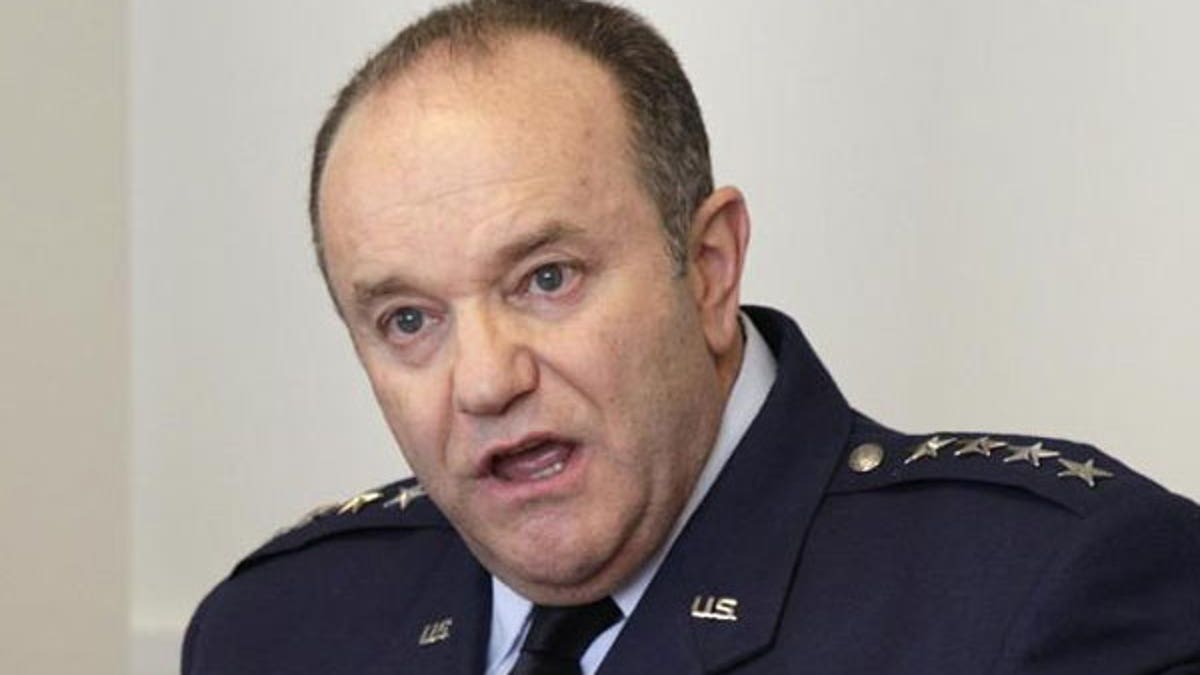
(Military.com)
Air Force Gen. Philip Breedlove, the NATO commander, said Monday that U.S. troops would be part of a new rapid response force within the alliance aimed at deterring what he called Russian President Vladimir Putin's "hybrid war" in Eastern Europe.
The Air Force 4-star laid out his plan for improvements to the response force in two public appearances Monday – first at the Atlantic Council, a Washington D.C. think tank, and the Air Force Association's Air and Space Conference in the afternoon.
Referring to the ongoing military conflict as a new "hybrid war," Breedlove explained that the NATO Response Force, or NRF, is accommodating a series of new efforts to be better equipped to respond – should the circumstances in Ukraine continue to escalate.
The NRF is a multi-national rapid response force of roughly 25,000 troops assembled to protect the alliances' interests and, among other things, enforce NATO's widely known Article V stipulation. Article V of the NATO constitution commits each nation to regard any attack upon a member nation to be equivalent to an armed attack against them all.
"We have to adapt our responsiveness inside the NRF so that we have a force that can respond at speed to address this new model of hybrid warfare we have seen out of Russia. The entire NRF will become more responsive," Breedlove told the audience at the Air and Space Conference.
He explained that U.S. forces need to be a part of the proposed new group within the existing NATO Reaction Force that could deploy against a threat within 48 hours, Breedlove said in remarks to the Atlantic Council.
Last week at the NATO summit in Wales, President Obama said the U.S. would support a "spearhead" unit but he did not immediately commit to troops. Breedlove did not give details on how many U.S. troops would be part of the unit or cite the contributions from other member states.
Breedlove's plan to improve the NRF involves a series of initiatives aimed at strengthening the ability of the alliance to respond rapidly to various military contingencies – such as an intensified Russian invasion of Ukraine. Breedlove emphasized that NATO had, in recent years, been trying to regard Russia as a partner -- a circumstance which is no longer the case.
"In the past, we have relied upon the NRF. It is, however, not adequate to the task we see in front of us," he added. As a result, NATO will create what Breedlove referred to as a "very high speed response section of the NRF," which will be able to respond to military challenges in a matter of days.
At the Wales meeting, NATO Secretary General Anders Fogh Rasmussen said a multi-national force of several thousand troops with a headquarters in Eastern Europe would shore up the 28-member alliance's commitment to NATO's Article V on collective defense.
Breedlove's briefing came as 200 paratroopers the 173rd Airborne Brigade arrived in Ukraine to join about 1,000 allied troops in the Rapid Trident joint training exercises with Ukrainian forces through Sept. 26, the Pentagon said.
In a statement, Russia's Foreign Ministry has denounced the U.S. troop presence in Ukraine.
"They risk wrecking the progress made in the peace process in Ukraine, and encourage a deepening of the split in Ukrainian society."
Breedlove said that Russia's hybrid warfare relied on "little green men" – Russian troops without insignia – to stir unrest in Russian-speaking areas as Russia built up heavy forces on the borders to open up supply routes.
"We see a nation that assembles a large force along the boundary of another nation. The force then goes across an internationally recognized border and annexes a portion of a sovereign nation. That is outside the norms we have expected in Europe over the last decade. We have had to address how NATO goes forward in light of these developments," Breedlove said at the Air and Space Conference.
Russia followed the pattern in Crimea and eastern Ukraine, Breedlove said, and was now threatening the Baltic states of Estonia, Latvia and Lithuania.
In response, the U.S. sent F-16s and F-15s to join air patrols over the Baltic states, Breedlove said, and also sent troops to rotate through those countries on joint exercises.
"Clearly, when Mr. Putin now looks across the border at those three nations, he sees a NATO alliance," Breedlove said. The challenge for NATO going forward will be to "prepare those nations to survive this hybrid war," Breedlove said.
In Ukraine, the Russians "for several days have been reducing their forces" while maintaining significant units on the border during the shaky ceasefire declared last week, Breedlove said.
However, Russian armored columns had already forced routes into the separatist strongholds of Donetsk and Luhanks, Breedlove said, "and those lines of support are now wide open."
-- Richard Sisk can be reached at richard.sisk@monster.com
-- Kris Osborn can be reached at kris.osborn@monster.com

